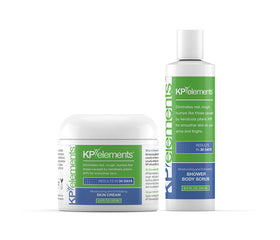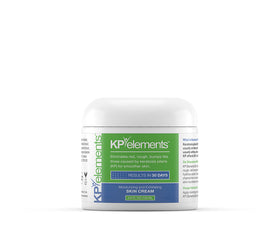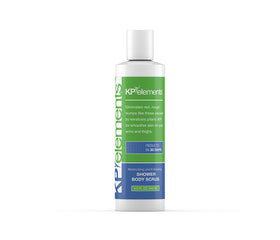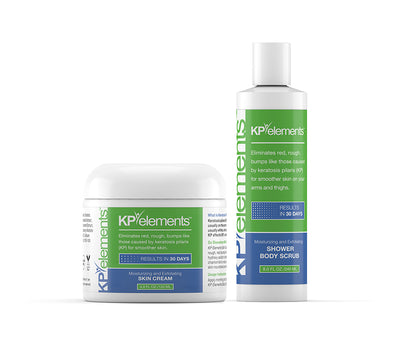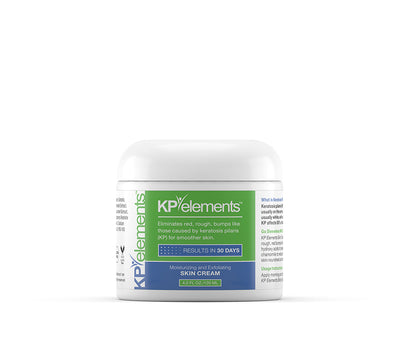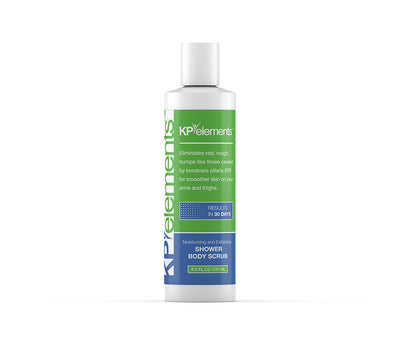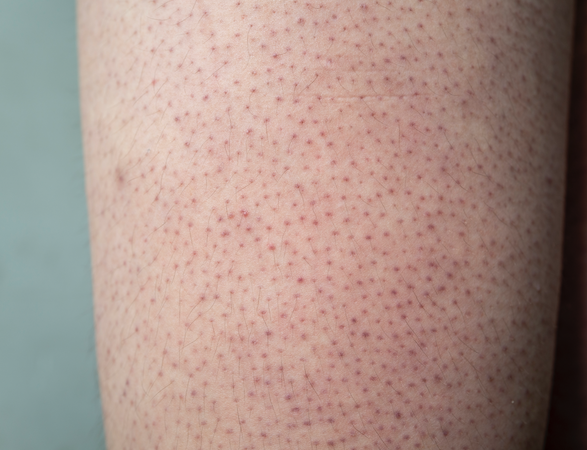
Could Your Dry, Bumpy 'Chicken Skin' be Keratosis Pilaris?
If you have small red dots and rough bumpy skin on your arms, legs, buttocks, or cheeks, you’re not alone.
Keratosis pilaris, (sometimes called ‘chicken skin’) is one of the most common skin conditions in the world, affecting up to 50% of adults and 80% of adolescents.
Patients sometimes mistake their ‘chicken skin' for dry skin, pimples, or even something more serious like atopic dermatitis, but understanding the difference between keratosis pilaris and other common skin conditions can make a big difference when it comes to treating it.
What Causes Keratosis Pilaris?

Keratin is a protein that naturally occurs in our hair, nails, and skin. It helps to heal those body parts and keeps them healthy, but too much keratin can be a problem.
When our body overproduces keratin, it can sometimes clog our pores and block hair follicles, leading to the bumpy skin we know as keratosis pilaris.
Keratosis pilaris has a genetic component, so if someone in your family has it, there’s a good chance you will too.
It is also impacted by the climate; appearing more commonly in colder months. This is likely related to the fact that our skin tends to dry out in the winter, causing our skin to overproduce keratin in response.
Keratosis pilaris isn’t typically painful, so if you have itchy and inflamed skin, you may be dealing with a different condition. If so, speak to a dermatologist or skin care professional to determine your next steps.
What Should I Do if I Have Keratosis Pilaris?

If you’re ready to reduce the appearance of your keratosis pilaris, there are several ways you can target the issue.
Gentle Exfoliation:
Many people are tempted to vigorously scrub their bumpy skin with the same types of exfoliators used to unclog pores, but experts recommend against this because it can make your red bumps more visible in the long run. Instead, gently exfoliate with a damp washcloth and a Keratosis Pilaris-specific product while avoiding heavy or intense scrubbing.
You can also exfoliate with a skincare compound like lactic acid or salicylic acid. Dermatologists call these compounds ‘keratolytic’ which means they chemically reduce the primary cause of keratosis pilaris: keratin buildup.
Moisturizing:
The fact that keratosis pilaris is more common in the wintertime is no coincidence. You’ve probably noticed how hard it can be to keep your skin from drying out when the weather is colder.
As mentioned earlier, keratosis pilaris is more visible on dry skin, so using a moisturizer is an amazing way to fight back.
Dry skin is also more prone to the overproduction of keratin, so be sure to keep your skin as hydrated as possible.
Warm Weather:
This is one solution that might be a bit less practical, but warm climates are a great place to be if you struggle with keratosis pilaris.
Skin typically stays better hydrated in warm weather, so if you’re tired of dry skin, maybe it’s time to schedule a tropical vacation. You just might see some positive results!
What Products Should I Use To Treat Keratosis Pilaris?

You can start dealing with your keratosis pilaris today by picking up the KP Elements Cream and Scrub Bundle. This helpful duo combines the most effective treatments for keratosis pilaris in one complete, easy-to-use package.
Simply lather the exfoliating scrub on the affected areas when you shower. After you’ve dried off, massage the moisturizing cream into your skin until it’s fully absorbed. KP Elements products are most effective when used consistently, and many people notice positive results in under a week! You can read our complete guide to treating your Keratosis Pilaris with KP Elements here.
